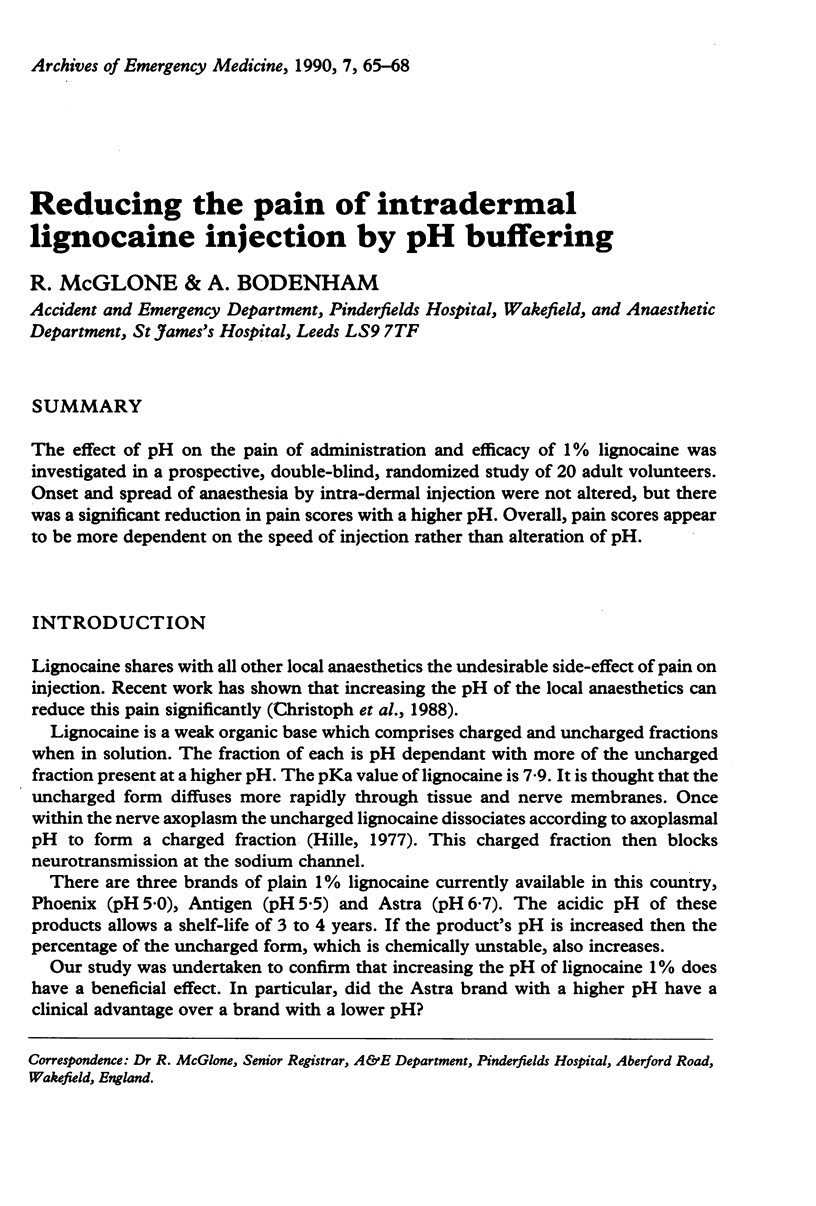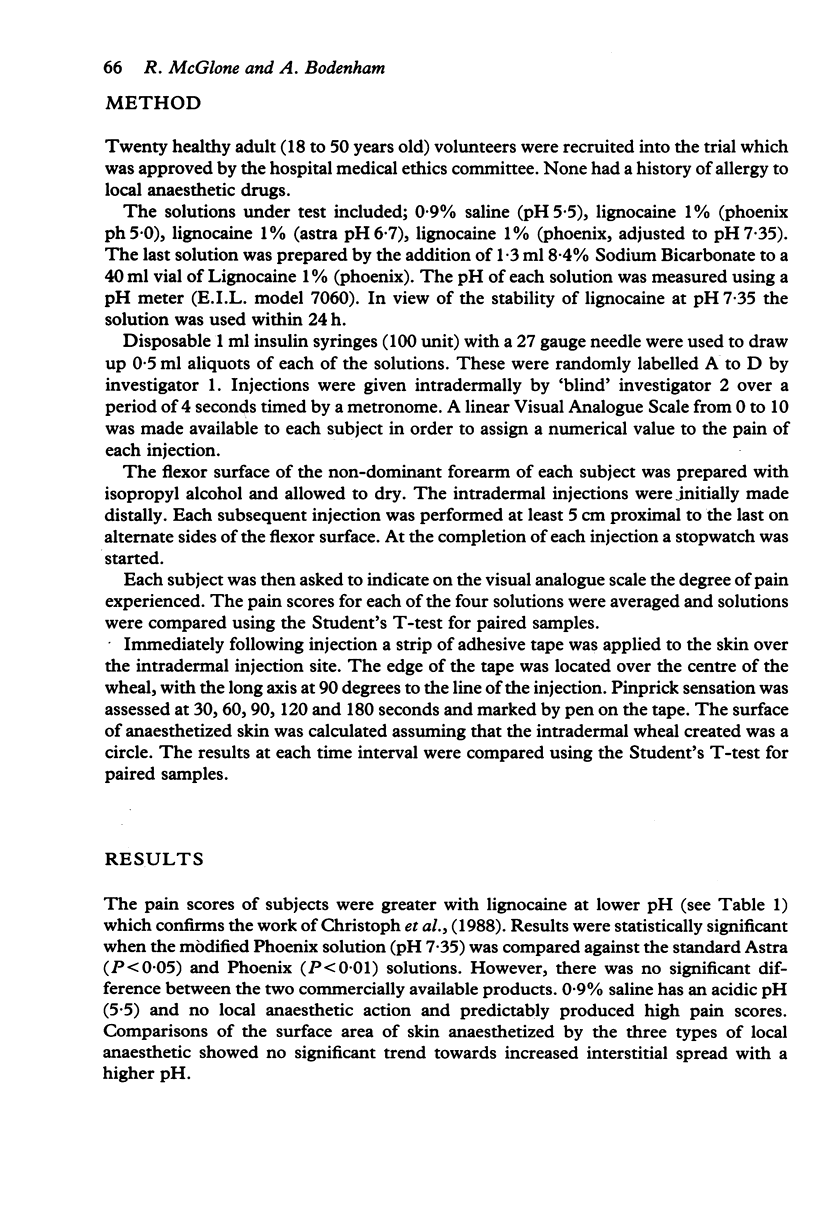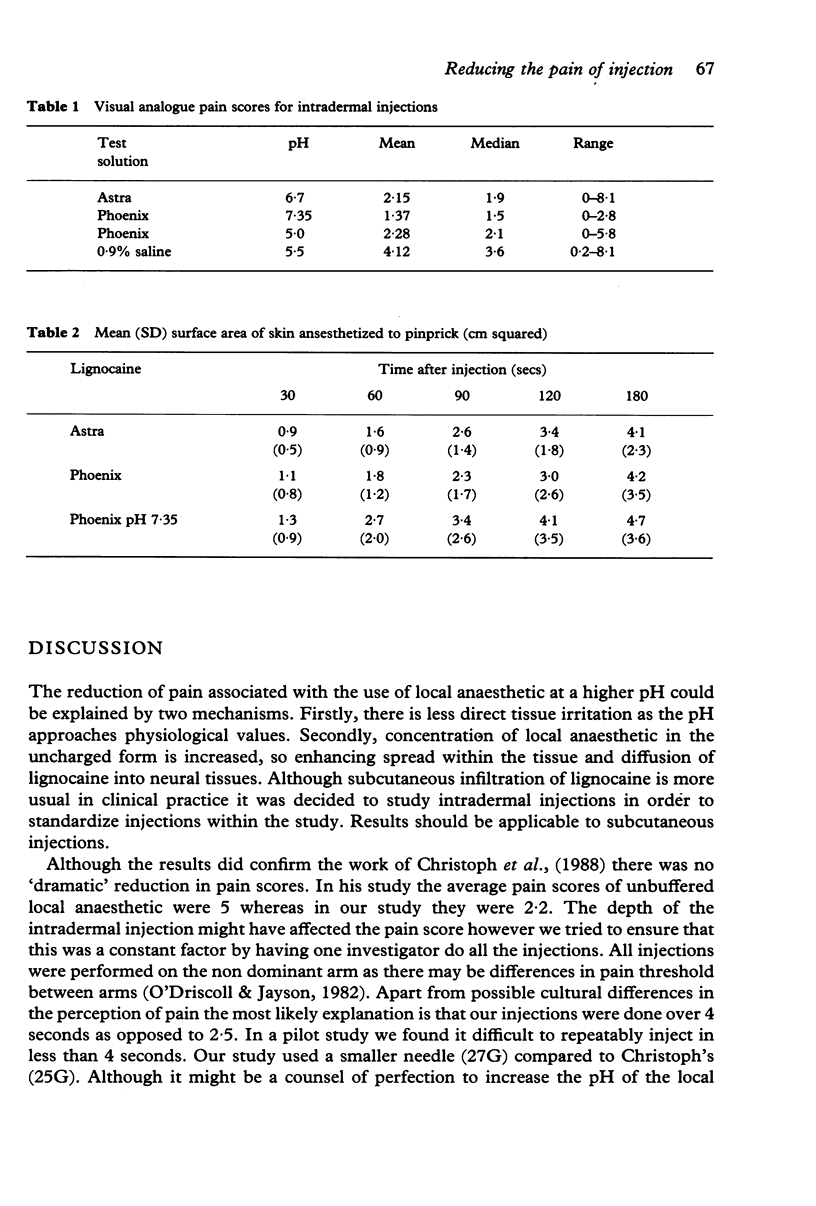Abstract
The effect of pH on the pain of administration and efficacy of 1% lignocaine was investigated in a prospective, double-blind, randomized study of 20 adult volunteers. Onset and spread of anaesthesia by intra-dermal injection were not altered, but there was a significant reduction in pain scores with a higher pH. Overall, pain scores appear to be more dependent on the speed of injection rather than alteration of pH.
Full text
PDF



Selected References
These references are in PubMed. This may not be the complete list of references from this article.
- Christoph R. A., Buchanan L., Begalla K., Schwartz S. Pain reduction in local anesthetic administration through pH buffering. Ann Emerg Med. 1988 Feb;17(2):117–120. doi: 10.1016/s0196-0644(88)80293-2. [DOI] [PubMed] [Google Scholar]
- Hille B. Local anesthetics: hydrophilic and hydrophobic pathways for the drug-receptor reaction. J Gen Physiol. 1977 Apr;69(4):497–515. doi: 10.1085/jgp.69.4.497. [DOI] [PMC free article] [PubMed] [Google Scholar]
- O'Driscoll S. L., Jayson M. I. The clinical significance of pain threshold measurements. Rheumatol Rehabil. 1982 Feb;21(1):31–35. doi: 10.1093/rheumatology/21.1.31. [DOI] [PubMed] [Google Scholar]


